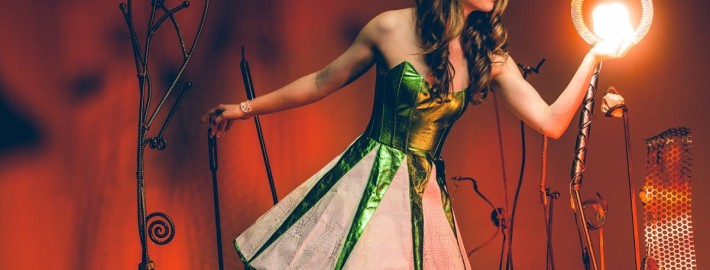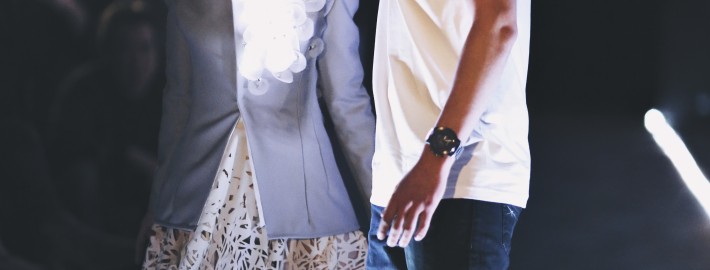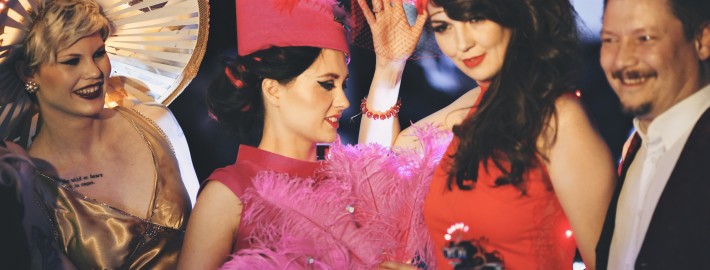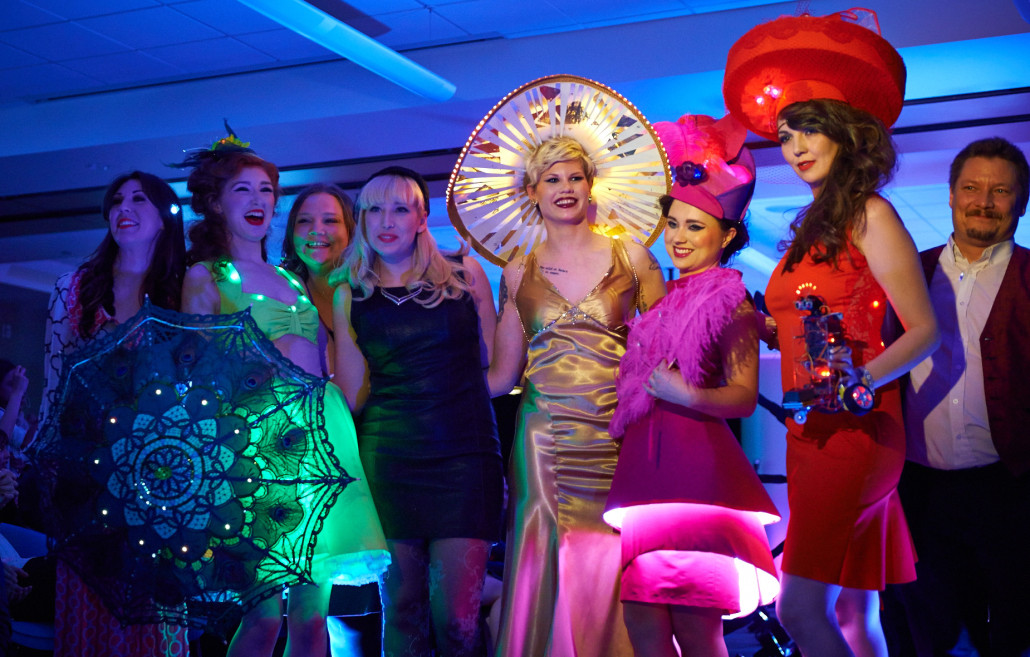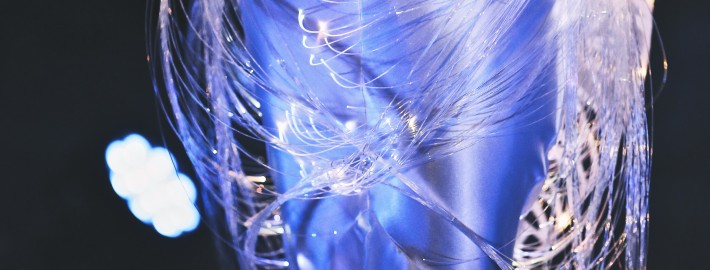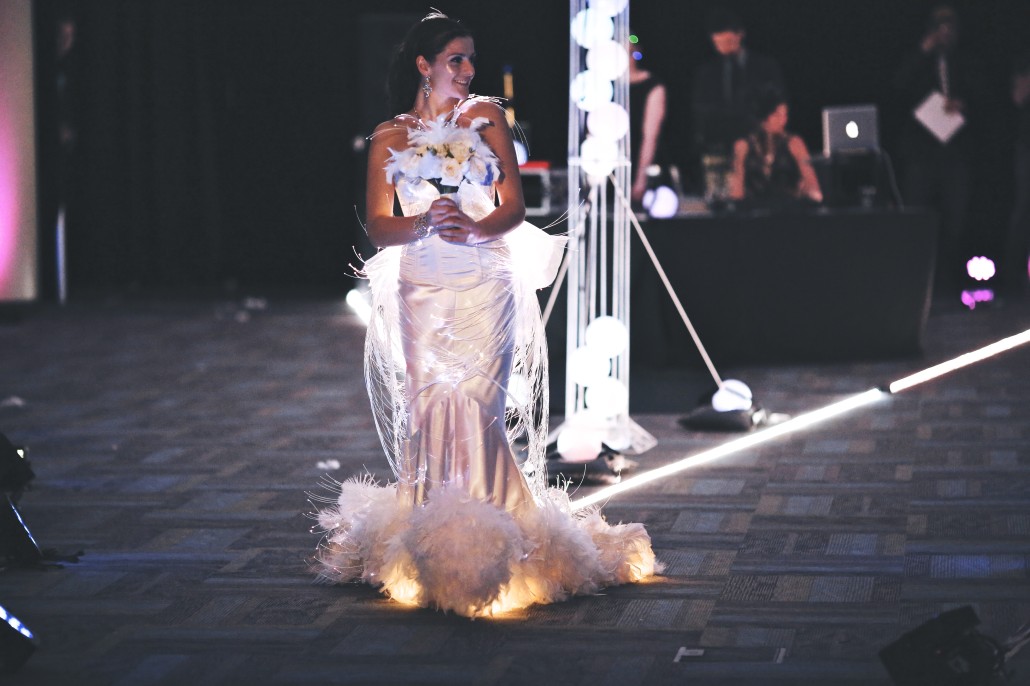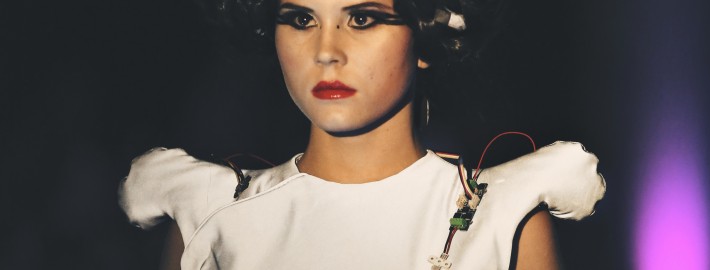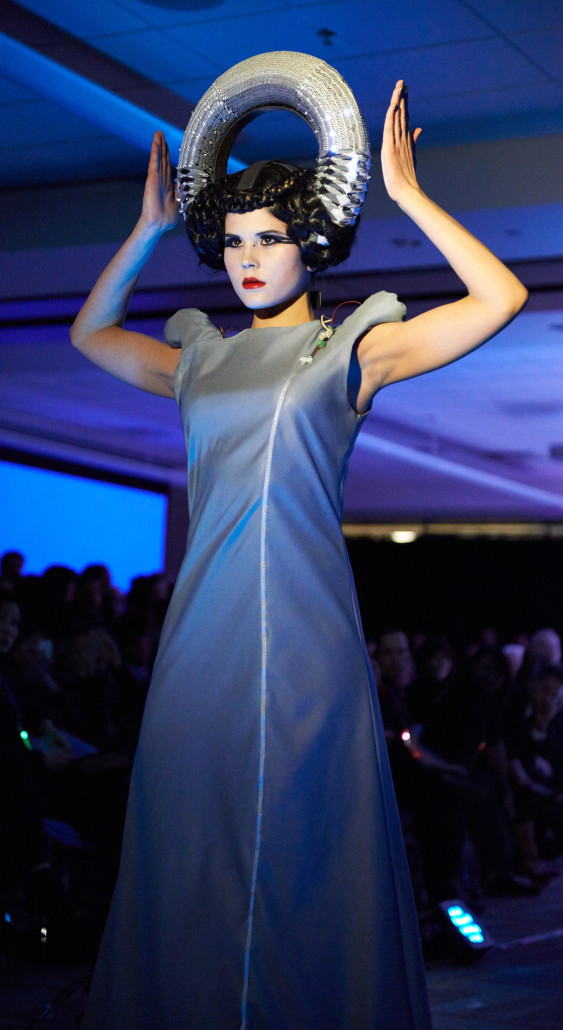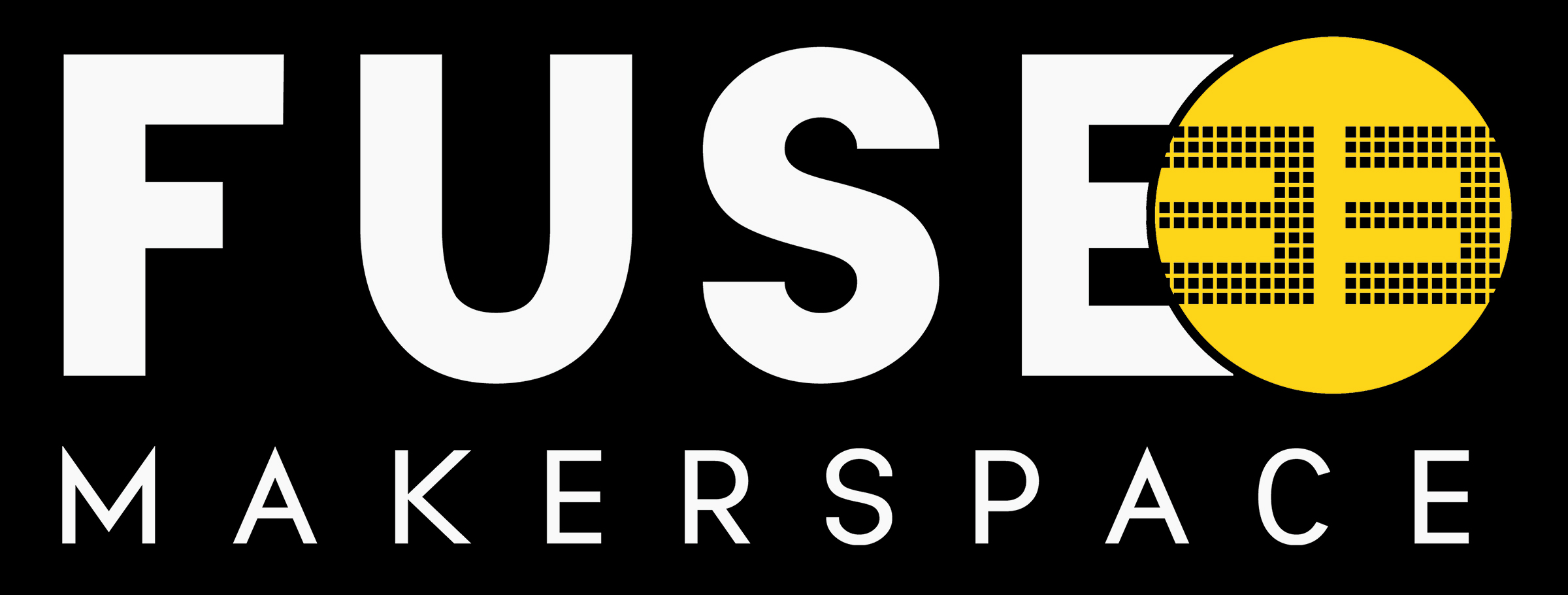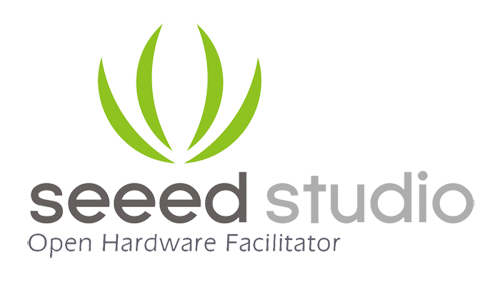MakeFashion Spotlight is an insider’s look on our 2014 gala pieces. Follow us as we showcase each of our designers and the inspiration and technology behind their work. Photos by Edward Ross photography.
The Proxima Team is Laura Dempsey, Hannah Newton, Ben Reed, Dan Damron and Chris Zaal at the SAIT RADLab. Laura Dempsey grew up in Calgary and has lived in Europe and the U.S. She is currently completing a Master of Design in Strategic Foresight and Innovation at OCAD University in Toronto.
“I came across Calgary’s maker community while on the hunt for a laser cutter I could use for an art project. Through contacts at Protospace (a maker space in Calgary), I attended MakeFashion’s launch event, and decided to apply as a designer. I couldn’t be happier to have stumbled upon this community!
My design partner Hannah and I have collaborated on wearable art in the past, and this is our second year designing for MakeFashion. During the inaugural year, I created a motion-sensitive dress for dancer Sarah Curts that lit up based on her movements, and Hannah hand-crafted an amazing head-piece. A video of the dress can be viewed here.
Last year I chose a simple concept of movement-based light, but this year we wanted to create a more sophisticated and interactive narrative.
Proxima is about a love story. We wanted to create a physical manifestation of the ‘electricity’ produced between two lovers as they move closer to one another.
Technology used in Proxima includes:
Thingmagic M6e UHF RFID Reader
Beaglebone Black
2x 5V 3A regulators
2x 7.4V LiPo Battery Packs
TP-Link WiFi Dongle
WS2811 Addressable LEDs
Teensy 3.0
The seed of the idea for this year’s grew out of an idea about proximity, and how a garment might react to the presence of another person. We (Ben Reed and I) had several introductory discussions about the initial idea, what was possible and the type of technology that might be appropriate. As I’m currently living in Toronto and the RADLab is in Calgary, we had to make the most of our limited collaboration sessions.
The jacket went through several iterations before I finalized the style, but once that was done we moved forward quickly. I couriered the jacket to Calgary (where all of the LEDs, wiring and equipment were mounted on the coat and tested) and – due to my school schedule – flew into Calgary just two days before the show to construct the rest of the garment with Hanna’s help. It was a marathon!
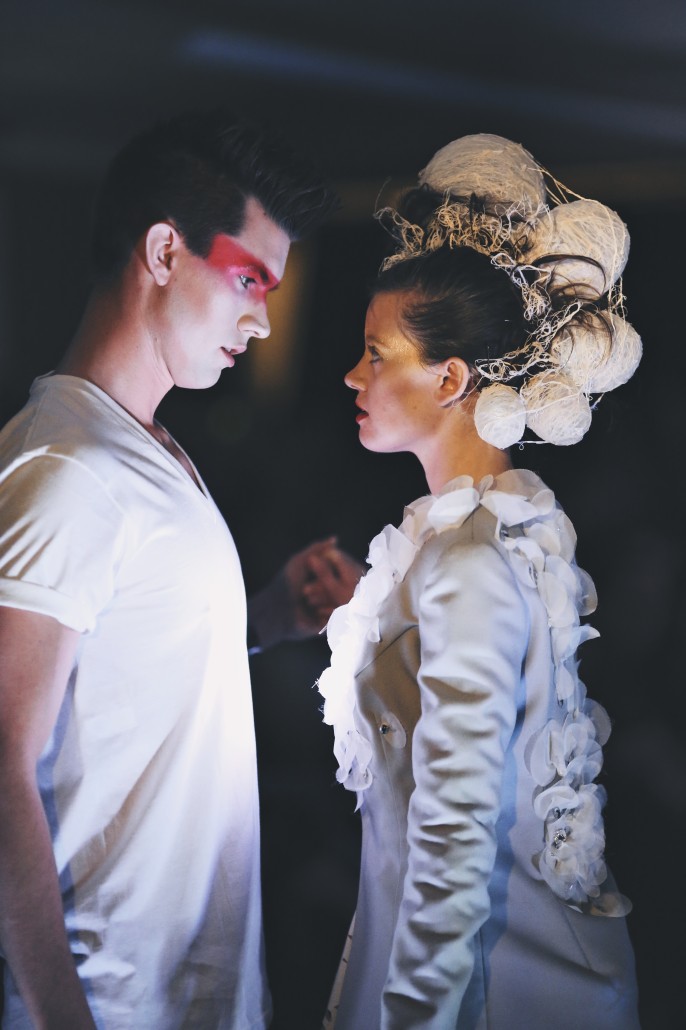
Photos by Andras Schram
The jacket has been programmed to light up based on the proximity of RFID tags hidden within the male dancer’s costume, meaning that during the show it lit up only in his presence. The closer he came to the female dancer, the more the lights sparkled. The jacket was programmed to respond not only to proximity, but also directionality. So, when our dancers Megan and Ben faced each other, the front of Megan’s jacket lit up, and as she moved around him, the light would follow whichever part of her body was closest to his.
After the show, Ben Reed and his team re-programmed the jacket to light up with different colours based on the type of tag being held up to it. It allowed audience members to directly interact with the piece, which was really exciting.
Collaborating from a distance (I’m based in Toronto, Hannah lives in Vancouver and the RADLab is in Calgary) was challenging, as was my lack of sophisticated technical knowledge. It was also hard to conceptualize where all of the technology could fit into the jacket without ruining the aesthetic. Everything came together in the end, though!
Working with Ben, Dan and Chris at the SAIT RADLab was incredible. They made this piece come to life in a way I could never have done on my own. They also had great insights into possibilities I had not previously considered. It was really inspiring working with people whose skill sets are so different from my own.
I see great potential for wearable technology to be incorporated into dance performances. I always knew the performance would be a duet between two dancers. I think part of the beauty of wearable technology is in the story it can tell onstage, so that was a huge focus for this piece.
I like the idea of people connecting through spontaneous interaction – that something you’re wearing might light up based on the proximity of another like-minded person (whom you not have even met yet).
My advice to new MakeFashion designers is to jump in head first. Start with a simple idea, do research and ask for help often. You’ll find it.
Hannah and I are already scheming for next year’s show. We’re thinking of moving away from LEDs and looking into servos. That’s all I’ll say!”
– Laura Dempsey, returning designer for MakeFashion two years in a row.
Media on Proxima:
RFID Journal: Designer Has RFID Up Her Sleeve
The 2014 MakeFashion gala brought to you by OnConference in March 2014 had over 400 attendees and showcased an inspiring collection of local and international wearable technology. E-mail info@makefashion.ca for information on how to become involved as a volunteer, designer, tech enthusiast, or sponsor.

